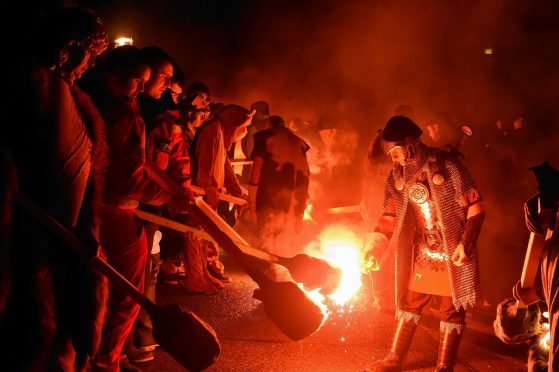Despite its links with ancient times, Up Helly Aa is a festival which was born in the 19th century.
Reports from 1824 indicate that people in Lerwick staged “uproarious” celebrations to mark Christmas Eve, where the streets were crammed with revellers.
As the town expanded during the 1800s, residents involved in the festive event began to parade barrels filled with burning tar through the town.
After outbreaks of violence between rival groups of “tar-barrelers”, young Shetlanders decided to fashion a new celebration aimed at bringing people together.
Around 1870, the inaugural Up Helly Aa took place, which postponed celebrations until late January and incorporated a torchlight procession and “guizers”.
The viking themes were gradually added and, in the 1880s, the original replica longship was produced.
The vessel always contains a pole rising from its bow, with a red rubber glove affixed to the top, reflecting the viking tradition that the first person to touch a land could claim it as their own.
Legend states that one viking so badly wanted his own land that he chopped his hand off and threw it ashore.
A Guizer Jarl was first appointed to oversee the festivities in 1906; he was joined by a squad from approximately 1920.
The original event began taking on wider fame in the 1950s, after a radio documentary – and has subsequently grown into a tourism phenomenon.
